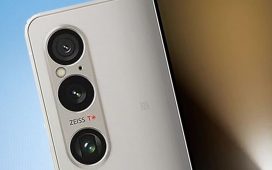For the fourth quarter, logistics firm Delhivery said its express parcel shipments, a proxy for ecommerce delivery volumes, declined 13% sequentially to 176 million.
Cofounder and chief executive Sahil Barua indicated that the slump in the March quarter came after a strong October-December period, when ecommerce marketplaces hold their festive season sales. However, even on a year-on-year basis, delivery volumes for the company were down 2%.
Brokerage firm Citi in a report on Delhivery’s results acknowledged the “muted online consumption,” but said that it did not “anticipate risk to long term 15%-20% growth expectations in ecommerce” due to this.
 ETtech
ETtechBeauty and fashion retailer Nykaa flagged consumer brands diverting their advertising dollars to increase discounts with an aim to drive demand that has become subdued. In the post-earnings analysts call on May 22, Anchit Nayar, CEO of Nykaa E-retail, said that he hoped brands would shift their spends back to advertising once demand picked back up.
Discover the stories of your interest

Similarly, Honasa Consumer, parent company of beauty and personal care brand Mamaearth, saw its flagship brand grow in single digits during fiscal 2024. It is now recalibrating its offline strategy to improve growth as well as margins.
Overall ecommerce sales continue to be sluggish, an executive at a major third party logistic firm said, likely growing at less than 15% compared with the usual approximately 20% growth rate.
“Apparel and smartphone shipments, which usually do the heavy lifting when it comes to overall ecommerce growth, have not had the opportunity to significantly grow given the lack of major events and as there were significant purchases made in the last festive season,” the logistics executive added. “However, some support has come in from improving appliance sales due to the early summers.”
ET had reported on May 9 that the demand for ACs, fans and coolers grew by 80%, 20% and 45%, respectively, during March and April from a year earlier on Amazon India, while at rival Flipkart, AC demand rose 50-60% in March on-year.
A senior ecommerce executive said that while the first quarter witnessed a slump in consumption growth, volumes continued to improve on a month-on-month basis.
For smartphones, a shift to offline purchases and a lack of major releases have also kept sales muted. In a report, market intelligence firm Counterpoint Research said Indian smartphone shipments grew 8% year-on-year in January to March, though the low base of the same period last year was a primary driver.
“The offline share (of total sales) reached 64%, marking the highest quarterly post-Covid figure,” the report added.
However, for smartphones, premiumisation continued as the market grew 18% in terms of value. The premium segment, which consists of items costing over Rs 30,000, were 20% of overall sale volume and 51% of overall sale value for the quarter, its highest ever, the report said.
“We are also seeing a trend where more and more smartphone purchases seem to be upgrades, so users save up for major discount periods, and that is also reflected in the premiumisation,” said the logistics executive cited above.
As per data research firm IDC, online channel shipments for wearable devices such as earphones and smartwatches declined 14.1% on-year, the second consecutive quarter of decline.
A top executive at a smartwatch maker said that the December quarter saw various brands shipping excess inventory for the festive season, which did not witness as much demand as expected.
“Because of high levels of inventory for some consumer electronics carried forward from the previous quarter, the January-March period did not see much in terms of shipments,” the executive said. “This is an indicator of there not being enough demand as well… This is also reflecting in the falling ASPs (average selling prices) for products such as smartwatches and earphones.”
A venture investor focused on consumer brands said that there are macro signs emerging that point at a pickup in demand in tier 2 and tier 3 cities.
“Some early indicators like growing two-wheeler dispatches, FMCG sales in smaller towns are showing up,” he said. “Once that begins to pick up, discretionary consumption will also follow and show up in ecommerce volumes across the board.”









